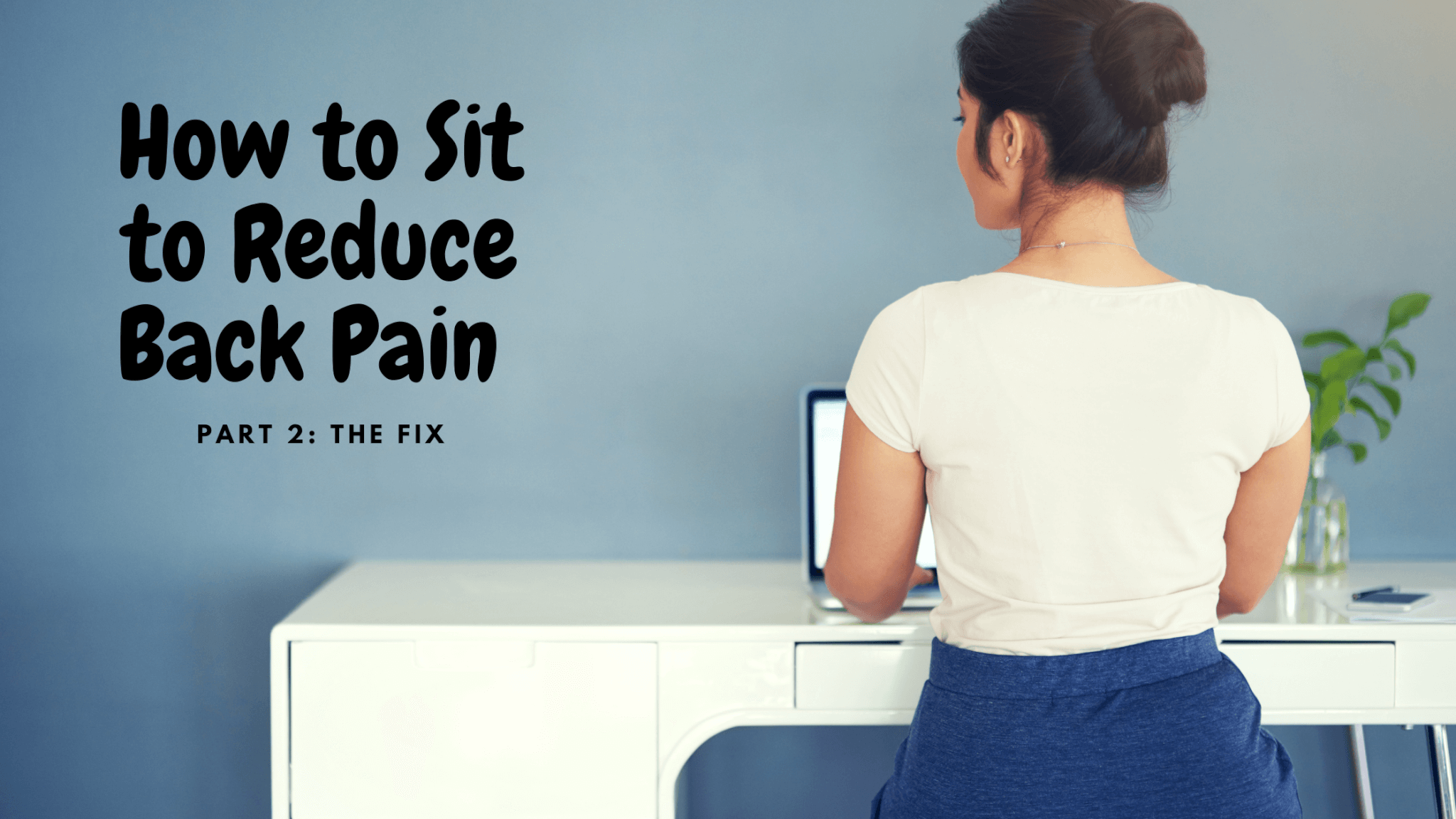Welcome back to part two of “How to Sit to Reduce Back Pain”, last time we talked about why sitting and the pain/damage it causes in the long term. Today we are going to discuss how to sit to help reduce the pain and to fix those aches. So let’s dive into it!
In the words of Dr. Kelly Starrett “Sitting is death”.
The Proper Seated Position:
- First start off by standing and working on the bracing technique of your core. Basically get yourself into a solid standing structure with good posture before sitting down. Read this blog for a reference. https://teamquinnfit.com/why-posture-is-important/
- Before you sit into your chair a few adjustments should be made. For starters you want your seat to be raised high enough to where you can place your feet flat on the floor and your knees to be angled slightly below your hips. This let’s the hip flexors relax a little in a longer position. Ergo reduces hip and back tension/ pain.
- While seated in your desk chair, sit slightly forward in your chair to keep your hips under your shoulders and ribs cage lined up. This will prevent your hips from rolling forward which tends to happen when you lean back into the seat.
- Here’s the tricky part, to maintain proper spinal support and alignment studies show, you must keep a braced tension in your core of about 20%, but to do that all day long and in a static seated position is damn near impossible and would take way to much mental capacity for you to get your work done. So research shows that most people only have the capacity and strength to maintain this tension for about twenty minutes at a time. So, the recommendation is to every 20 minutes you should stand up and reset your abd re-engage your bracing technique to reset your sitting posture.
- Lastly, to piggyback on the last part, I know personally the difficulties of getting up every twenty minutes to readjust and to move around while on the clock. So some easy tips and tricks to fix yourself.
- Ergonomic stand up desk. Adjusting your desk to sit & Stand throughout the day. Think standing 60%, sitting 40%.
- Set a timer every 50-60 minutes to give yourself 5-10 minutes to reset and move around. Go for a walk, take the stairs, do some squats. Get up and move! This not only helps your body but your mind and work capacity.
- Preemptive Strike! Use resistance training to combat common postural deviation from sitting. Specifically focusing on your back muscles, hip extension exercises and core stability.
Finally here’s a nice little diagram of a proper seated position:
How To Sit To Reduce Back Pain
Part: 2 The Fix
Welcome back to part two of “How to Sit to Reduce Back Pain”, last time we talked about why sitting and the pain/damage it causes in the long term. Today we are going to discuss how to sit to help reduce the pain and to fix those aches. So let’s dive into it!
In the words of Dr. Kelly Starrett “Sitting is death”.
The Proper Seated Position:
- First start off by standing and working on the bracing technique of your core. Basically get yourself into a solid standing structure with good posture before sitting down. Read this blog for a reference. https://teamquinnfit.com/why-posture-is-important/
- Before you sit into your chair a few adjustments should be made. For starters you want your seat to be raised high enough to where you can place your feet flat on the floor and your knees to be angled slightly below your hips. This let’s the hip flexors relax a little in a longer position. Ergo reduces hip and back tension/ pain.
- While seated in your desk chair, sit slightly forward in your chair to keep your hips under your shoulders and ribs cage lined up. This will prevent your hips from rolling forward which tends to happen when you lean back into the seat.
- Here’s the tricky part, to maintain proper spinal support and alignment studies show, you must keep a braced tension in your core of about 20%, but to do that all day long and in a static seated position is damn near impossible and would take way to much mental capacity for you to get your work done. So research shows that most people only have the capacity and strength to maintain this tension for about twenty minutes at a time. So, the recommendation is to every 20 minutes you should stand up and reset your abd re-engage your bracing technique to reset your sitting posture.
- Lastly, to piggyback on the last part, I know personally the difficulties of getting up every twenty minutes to readjust and to move around while on the clock. So some easy tips and tricks to fix yourself.
- Ergonomic stand up desk. Adjusting your desk to sit & Stand throughout the day. Think standing 60%, sitting 40%.
- Set a timer every 50-60 minutes to give yourself 5-10 minutes to reset and move around. Go for a walk, take the stairs, do some squats. Get up and move! This not only helps your body but your mind and work capacity.
- Preemptive Strike! Use resistance training to combat common postural deviation from sitting. Specifically focusing on your back muscles, hip extension exercises and core stability.
Finally here’s a nice little diagram of a proper seated position:
